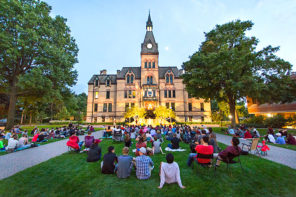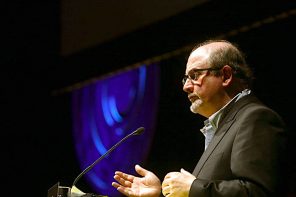President Barack Obama has been called commander-in-chief and baller-in-chief, but with his speech at Cairo University the former law professor has acquired the unlikely credential of religious-educator-in-chief. This task is a daunting one since our hopes for world peace depend largely on it. His speech gave religious educators a demo of how to teach religion in our globalized world.
First, you have to establish rapport and disarm suspicion. By greeting his audience with the simple Arabic, as-salam alaykum (peace be upon you), the president demonstrated that he knew the audience and the cultural rubric, and that he was not simply speaking of religion in the abstract.
The President taught that we have to avoid negative stereotypes about people of other faith traditions, providing a history of the long trajectory of the interaction between Muslims and the West. Religion was not treated as a timeless and reified subject, but embedded in historical, cultural, and political development of particular locales. In an age of sound bites and Twitter, he demonstrated the importance of historical knowledge, critical analysis, and fair judgment. He trusted that his audience could reason and negotiate complex data and perspectives, and not resort to knee-jerk reactions.
He invited us to enter other cultural worlds effectively through personal stories. “As a boy, I spent several years in Indonesia and heard the call of the azaan at the break of dawn and the fall of dusk.” People of other faiths are humans with deep devotion shaped by their religious practices.
The president reframed the relentless debates on the “clash of civilization” that took hold after September 11. Religion can be a cause of division and conflict, if we only focus on unbridgeable difference, and fail to speak of common ground and shared values. Although we may disagree, we have to respect others and continue the dialogue. At his controversial visit to the University of Notre Dame, the president said, “when we open our hearts and our minds to those who may not think like we do or believe what we do – that’s when we discover at least the possibility of common ground.”
As all good religious educators know, it takes a lot of time to prepare a good lecture. The president and his colleagues worked on his speech for months, and consulted leaders of the Muslim and Jewish communities. He knew that he was not going to avoid tough and difficult issues, such as Palestinian and Israeli conflict and wanted to hear from many sides.
The president understood the importance of Holy Scripture for religious communities in this region. He cited the Qu’ran, the Talmud, and the Bible, and also referred to religious figures in different traditions. At the end of the speech, he gave his audience an assignment—to work for peace.
As Parker Palmer has said, we teach who we are. President Obama once again showed that he is intelligent, fair-minded, and willing to take risk.




